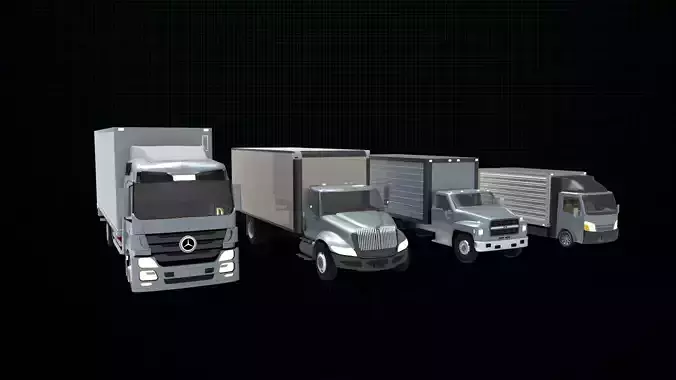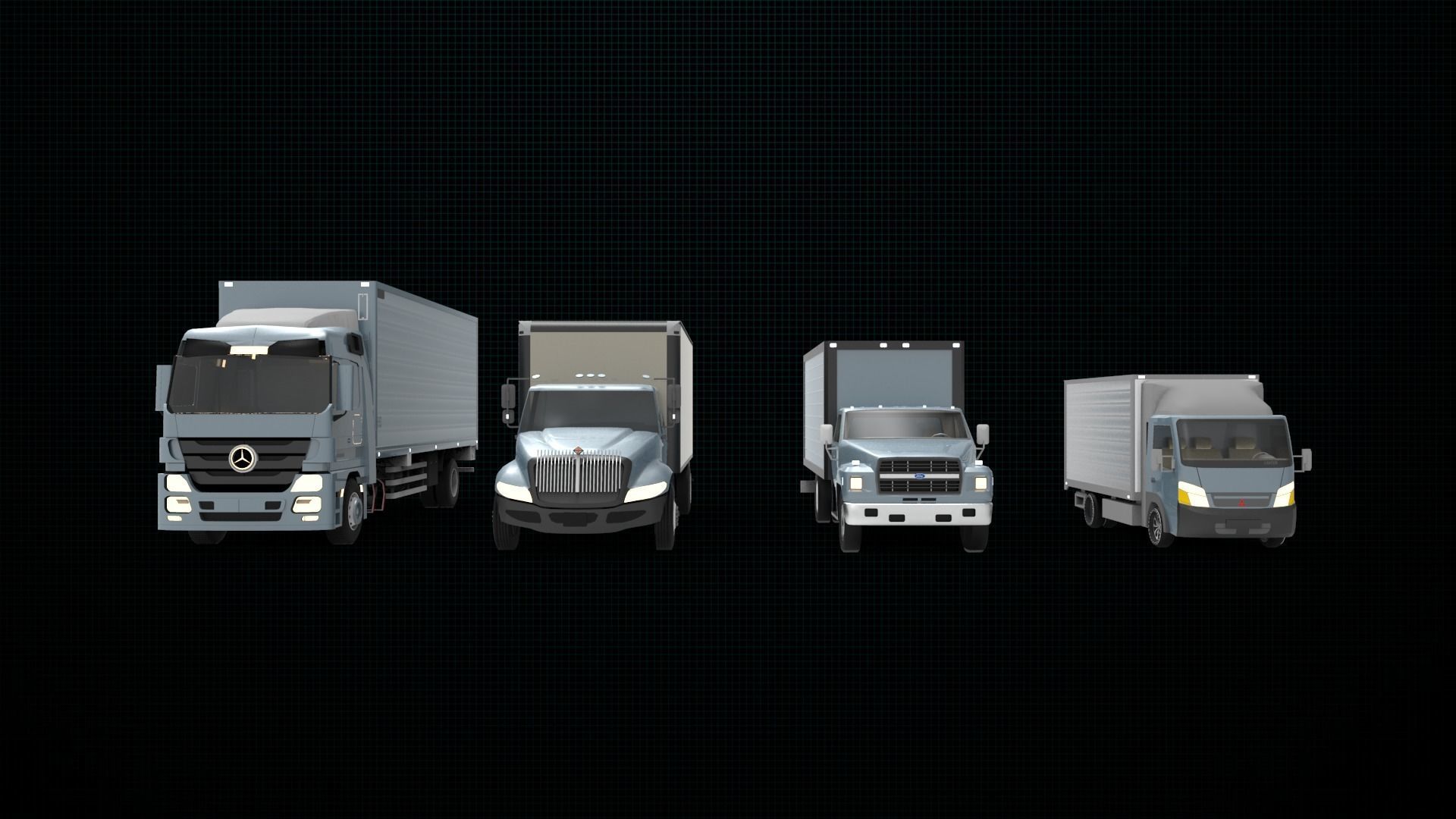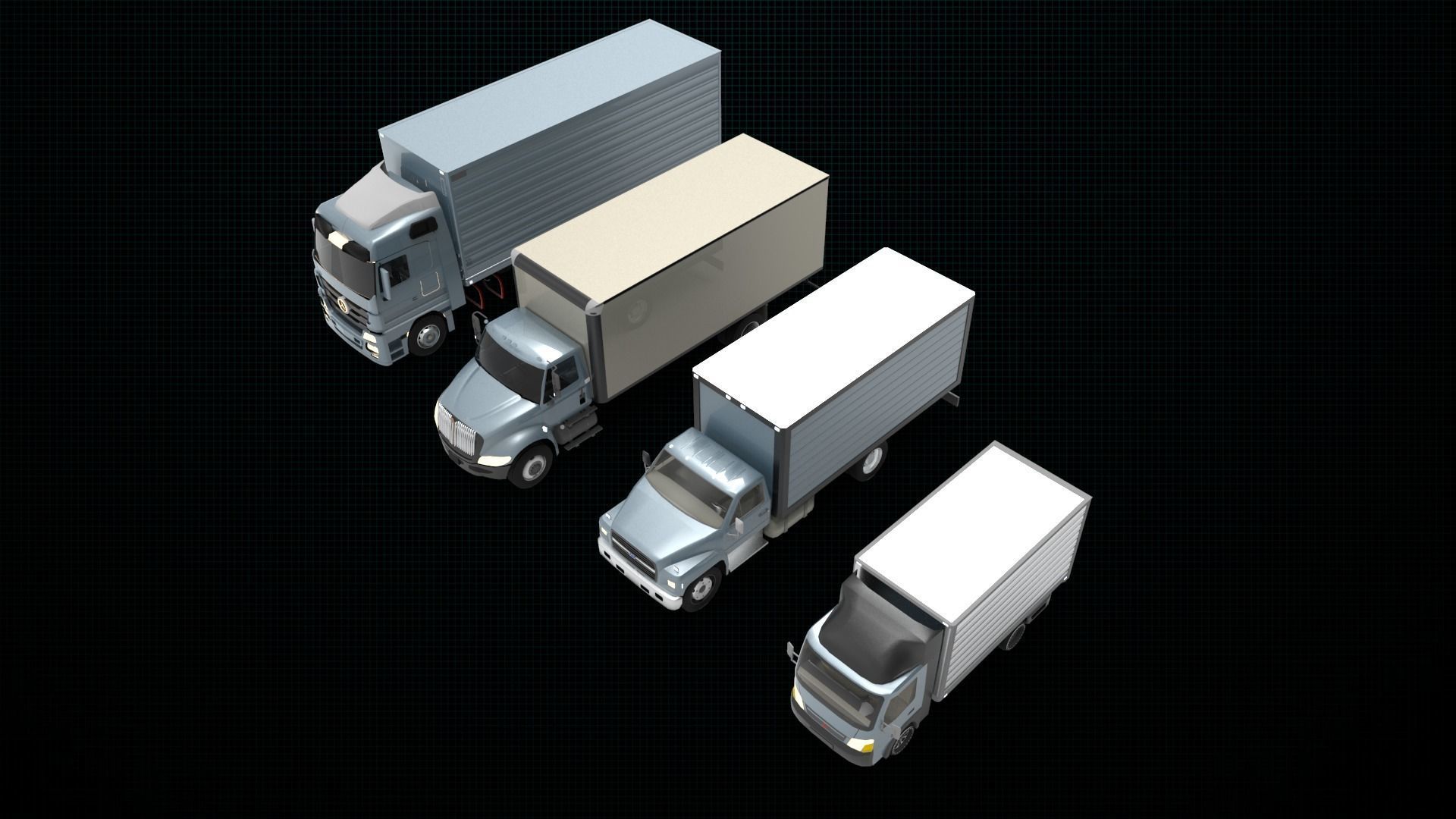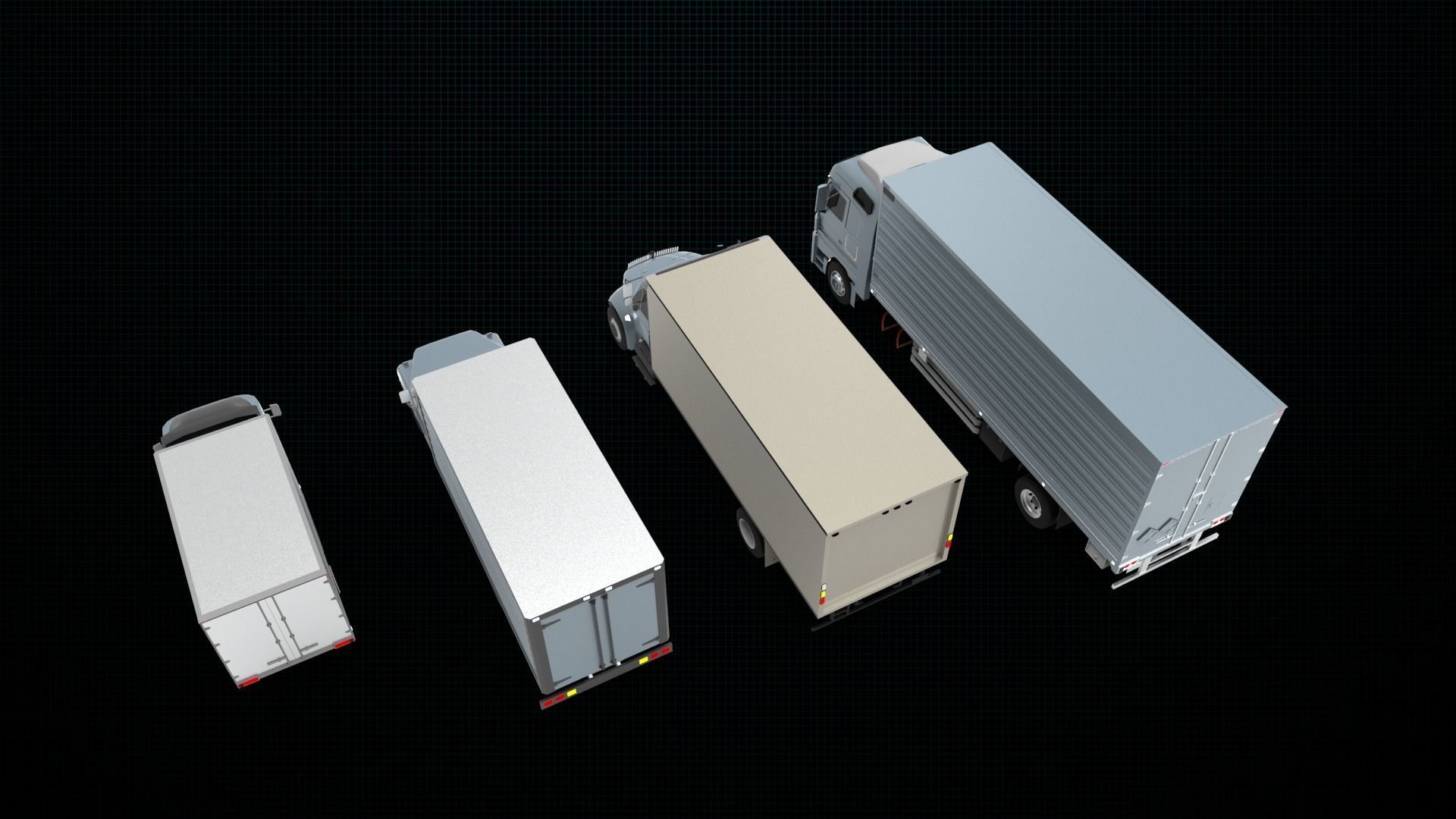
4 Variant box truck 3D model
A box truck—also known as a box van, cube van, bob truck[1] or cube truck—is a chassis cab truck with an enclosed cuboid-shaped cargo area.[2] On most box trucks, the cabin is separate to the cargo area; however some box trucks have a door between the cabin and the cargo area.[3]
The difference between a box truck and a van is that the cargo van is a one-piece (unibody), while a box truck is created by adding a cargo box to a chassis cab.Box trucks are typically 10–26 ft (3.0–7.9 m) in length[2] and can range from Class 3 to Class 7 (12,500 lb. to 33,000 lb. gross vehicle weight rating). They often have a garage door-like rear door that rolls up. They are often used by companies transporting home appliances or furniture, or are used as moving trucks which can be rented by individuals.[5]
Ford, Dodge and Chevrolet/GMC have historically been the most common manufacturers of conventional cab/chassis[citation needed] to which the cargo box is attached by various producers (called body builders or upfitters). Isuzu Motors, Mitsubishi Fuso Truck of America, Inc. and UD Trucks have been the most common producers of cab over-type medium duty cab/chassis used as platforms for box trucks.[citation needed]
Small box trucks often use the cab of full size vans from Ford, Chrysler or General Motors (eg Ford E-Series/Econoline/Ford Transit, Dodge Ram Van, Chevrolet Express/Chevrolet Van/GMC Vandura/GMC Savana),[citation needed] though pre-manufactured cutaway van chassis vehicles are the basis (rather than an actual cargo van), in order to reduce the labour required for production.





